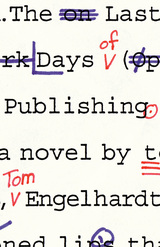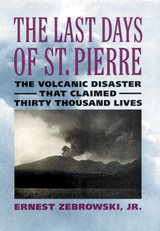
In 1959, at the age of twenty-two, Egyptian novelist Sonallah Ibrahim was imprisoned by Gamal Abdel Nasser’s regime. Over the following five years in prison in Egypt’s Western Desert, Ibrahim kept diaries that he smuggled out on cigarette papers.
In this novel, Ibrahim takes up Nasser as a fictional character tied tightly to real events, offering a window into his daily life in his final years. Ibrahim follows Nasser during the War of Attrition and the aftermath of the 1967 war with Israel and looks back on the events of the previous decades. He also chronicles Nasser at his most vulnerable, detailing a more private set of Nasser’s setbacks and defeats: the daily routines of a diabetic suffering from heart trouble in the months before his death. Political events as well as social and economic transformations are narrated through newspaper clippings and archival fragments, painting a portrait of the decline of a man who was once larger than life.

Originally published in 1975, The Apology and the Last Days is the final volume in a trilogy of novels—also including The Rise and Fall of Icarus Gubelkian and How to Quiet a Vampire—about the aftermath of World War II, by Borislav Pekić, one of the former Yugoslavia’s most important postwar writers. The narrator tells his story from prison, where he is serving time for the murder of a former Nazi official. As the novel unfolds, we learn that the victim was the same person whom the narrator, while a lifeguard during the war, saved from drowning, thus making him vulnerable to charges of collaboration. In this tragicomic tale, Pekić explores eternal questions of fate and individual responsibility.

2021 — Honorable Mention, Best Fiction Book Translation – International Latino Book Awards, Latino Literacy Now
Winner of the Tusquets Prize in 2015 and previously translated into French, German, Dutch, Polish, and Portuguese, Alberto Barrera Tyszka’s Patria o muerte is now available in English.
President Hugo Chávez’s cancer looms large over Venezuela in 2012, casting a shadow of uncertainty and creating an atmosphere of secrets, lies, and upheaval across the country. This literary thriller follows the connected lives of several Caracas neighbors consumed by the turmoil surrounding the Venezuelan president’s impending death.
Retired oncologist Miguel Sanabria, seeing the increasingly combustible world around him, feels on constant edge. He finds himself at odds with his wife, an extreme anti-Chavista, and his radical Chavista brother. These feelings grow when his nephew asks him to undertake the perilous task of hiding cell-phone footage of Chávez in Cuba. Fredy Lecuna, an unemployed journalist, takes a job writing a book about Chávez’s condition, which requires him to leave for Cuba while his landlord attempts to kick his wife and son out of their apartment. Nine-year-old María, long confined to an apartment with a neurotic mother intensely fearful of the city’s violence, finds her only contact with the outside world through a boy she messages online.

"From exhaustive research [Trevor-Roper] has put together a carefully documented, irrefutable, and unforgettable reconstruction of the last days in April, 1945."—New Republic
"A book sound in its scholarship, brilliant in its presentation, a delight for historians and laymen alike."—A. J. P. Taylor, New Statesman

With her sensitive prose and innate sense of drama, French-Lebanese writer Vénus Khoury-Ghata brings Mandelstam back to life and allows him to have the last word—proving that literature is one of the surest means to fight against barbarism.

A Classic Account of America’s Greatest Field General at the End of World War II—and the Mystery Surrounding His Death
“It would be as hard to give up all thought [of being a soldier] as it would be to stop breathing,” wrote George S. Patton in October 1945; “The great tragedy of my life was that I survived the last battle.” But Patton would not see the year out: in December he would die as a result of injuries sustained in an automobile accident in Germany. His unexpected death sent shock waves through the American and Russian commands. It seemed plausible that America’s greatest general may have been a victim of foul play. In the seven months following the German surrender, Patton had openly and provocatively criticized the Soviet Union and appeared to have transformed from a staunch anti-Nazi to a Nazi sympathizer. The Last Days of Patton by Ladislas Farago, a follow-up to his bestselling Patton: Ordeal and Triumph, attempts to reconstruct the last months of Patton’s life in order to determine if the general did indeed try to provoke a war with the Soviet Union and whether he failed to sufficiently de-Nazify the area of Germany under his jurisdiction. Farago also investigates the possibility of a conspiracy to murder Patton and reveals the role other prominent men, including Eisenhower, Montgomery, Marshall, and MacArthur, had in censuring and ultimately removing Patton from active service. The Last Days of Patton, originally published in 1981, is the story of the general’s final battle—a professional soldier caught up in the changing politics of the emerging Cold War and new reality of the atomic age.

Koppes, who came of age in the sixties, is an editor slowly running off the rails. In the six episodes of The Last Days of Publishing, he refights the Vietnam War in a Chinese restaurant, discovers that the paleontological is political in a natural history museum, mixes it up with a flamboyant literary agent who went underground decades earlier, and encounters a hippie cultural oligarch on the forty-fifth floor of Multimedia's transnational entertainment headquarters.
Tom Engelhardt, himself a publishing veteran, has produced a tumultuous vision of the new world in which the word finds itself hustling for a living. By turns hilarious, sardonic, and poignant, his novel deftly captures the ways in which publishing, which has long put our world between covers but has seldom been memorialized in fiction, is being transformed.

On May 8, 1902, Mont Pelée on the island of Martinique exploded. A deadly cloud of steam and ash churned through plantations and villages, flattened the grand city of St. Pierre, then thundered into the bay where it sank eighteen ships and hundreds of smaller craft. Within a minute or two, nearly 30,000 humans died. The splintered rubble of their homes and belongings burned for three days, and the world began to understand the awesome power of nuées ardentes, glowing avalanches of hot gas and debris that sweep down the slopes of volcanoes, instantly steaming to death anything in its path. The enormous death toll was particularly tragic because it was avoidable. Had it not been for an unfortunate combination of scientific misjudgment and political hubris, most of the victims would have escaped.
In The Last Days of St. Pierre, Ernest Zebrowski Jr. counts down the days leading up to the catastrophe, and unfolds a tale intertwining human foolishness and heroism with the remarkable forces of nature. Illustrations contrast life in Martinique before and after the eruption, and eyewitness accounts bring the story to life.
Although it seems a long time since the destruction of St. Pierre, it is a mere blink of an eye in our planet’s geological history. Mont Pelée will erupt again, as will Vesuvius, Krakatau, St. Helens, Thera, and most other infamously fatal volcanoes, and human lives will again be threatened. The St. Pierre disaster has taught us much about the awesome power of volcanic forces and the devastation they can bring.

Noack-Mosse's aim in documenting the horrors of daily life within Theresienstadt was to ensure that such a catastrophe could never be repeated. She also gathered from surviving inmates information about earlier events within the walled fortress, witnessed the defeat and departure of the Nazis, saw the arrival of the International Red Cross and the Soviet Army takeover of the camp and town, assisted in administration of the camp's closure, and aided displaced persons in discovering the fates of their family and friends. After the war ended, and she returned home, Noack-Mosse cross-referenced her data with that of others to provide evidence of Nazi crimes. At least 35,000 people died at Theresienstadt and another 90,000 were sent on to death camps.
READERS
Browse our collection.
PUBLISHERS
See BiblioVault's publisher services.
STUDENT SERVICES
Files for college accessibility offices.
UChicago Accessibility Resources
home | accessibility | search | about | contact us
BiblioVault ® 2001 - 2024
The University of Chicago Press









